
© Rob Marrison. (Click image for larger version)
Aldeburgh Festival – Britten Dances
Royal Ballet: Ceremony of Innocence
Royal Ballet Flanders: If Memory Serves, Courting the Senses, Dream Weaver
Suffolk, Snape Maltings,
20 June 2013
www.brittenaldeburgh.co.uk
www.aldeburgh.co.uk
www.balletvlaanderen.be
www.roh.org.uk
Interview with Kim Brandstrup on his Britten works
This year’s Aldeburgh Festival marks the centenary year of its founding genius, Benjamin Britten, with a series of commissions under the title ‘Inspired by Britten’, covering a much wider spectrum of the arts than the purely musical focus you might expect here. Even those who came just for this dance programme couldn’t miss the Britten-influenced sculptures and other installations on the lawns around Snape Maltings, and I hope some at least of them discovered the magical experience of sitting under a tree there and hearing some of Britten’s tunes transcribed for an orchestra of songbirds.
The Maltings itself is a wonderful setting for dance. It’s an austerely beautiful hall with perfect sightlines from every seat: the downside is that the big stage has no wings and no way of flying scenery. That’s a challenge, and obviously cuts out quite a large chunk of the standard repertory, but much rewarding work looks very good here – Sylvie Guillem appears here, Mark Morris has brought his company here several times, and I once even saw Dances at a Gathering here, looking perfectly at home. And this drawback is in any case far outweighed by the superb acoustics. The Britten Sinfonia played for this programme, conducted by Benjamin Pope and Barry Wordsworth, and sounded so good that you really could have closed your eyes and enjoyed a concert of Festival standard in itself.
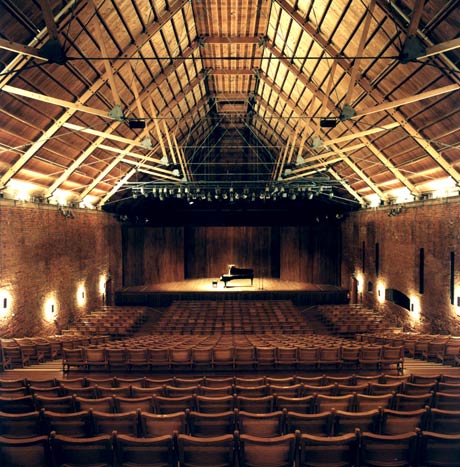
© Nigel Luckhurst. (Click image for larger version)
All of the four works which made up this ‘Britten Dances’ evening were ‘Inspired by Britten’ commissions, but the first three, presented by Royal Ballet Flanders, had their premières in their home theatre a couple of weeks earlier. (The Flanders connection, if you’re wondering, is through the company’s new director, Assis Carreiro, who until last year ran DanceEast which used the Maltings often and is a joint sponsor of the programme.) The programme opened with two short works by Ashley Page: If Memory Serves, to Britten’s Young Apollo, and Courting the Senses, to his arrangement of a Purcell chacony. If Memory Serves is a sunlit piece: on the surface it’s just three young men and a woman dancing by the sea, while the bright, lush music fizzes along; if you want to dig deeper, it’s an echo of the games on the Lido in Death in Venice, deeper still – and rather more difficult to envisage – it’s apparently Mnemosyne, mother of the Muses, looking for Apollo. But in any case it’s cleverly done, playing the high spirits of the young men against the slightly more serious and mysterious woman, danced with pleasing assurance by Laura Hidalgo.
Courting the Senses is much darker, both literally and emotionally. A more mature couple, in period costumes, begin their dance in the formal style the music seems to demand; gradually they become more engaged with each other and their encounter moves through sensuality to sexuality. It’s hardly an original scenario but the commitment of the dancers lifts it out of cliché into something more interesting . Page made it as a farewell gift for principal Geneviève van Quaquebeke, who retires from the stage after these two performances, at the early age of 34.
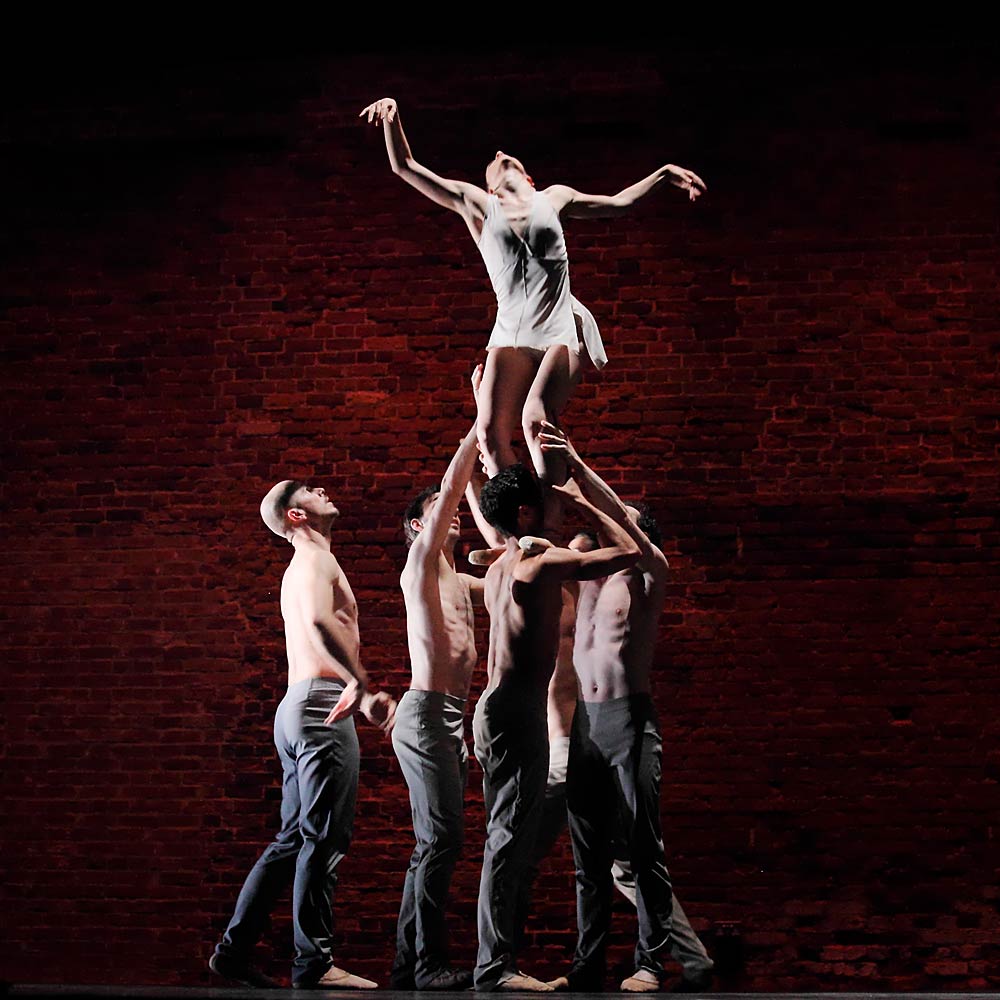
© Rob Marrison. (Click image for larger version)
Cameron McMillan’s Dream Weaver is a much more substantial piece, and the only one in the programme with a newly commissioned score. Half a new score, rather, as Larry Goves has taken most of the movements of the Nocturnal (after John Dowland) which Britten wrote for Julian Bream and interspersed them with what he describes as ‘diversions’ based on the original. It worked well, I thought – with the solo part excitingly played by Tom McKinney – but might actually be better heard on its own as it’s rather long and stretches the choreographer’s concept a little too far. McMillan is investigating the state between sleep and waking, and the tangle of images, relived experiences and painful or pleasing memories that surface then. I both admired and enjoyed the way he used his cast of 12 in constantly changing permutations of number and gender, creating some strikingly beautiful images and also finding something new in even such an often-seen routine as the woman carried and manipulated by several men. It’s quite a dense work and I’d like to see it again to undo some of the tangles – possibly, too, with the scenery which I’m told it has when seen on a more fully equipped stage.
Finally it was the turn of the Royal Ballet, with the première of Kim Brandstrup’s Ceremony of Innocence, set to Britten’s Variations on a Theme by Frank Bridge. Brandstrup had the advantage of knowing that his piece would only be seen at Snape, so he and his collaborators could tailor their work to the particular needs of this hall, resulting in some stunningly effective video projections by Leo Warner (who incidentally could surely make Peter Grimes work here if the Festival ever wants to bring this year’s beach production in out of the cold) and evocative lighting by Jordan Tuinam, who also lit the RBF works. Barry Wordsworth took over the conductor’s baton and the brilliant music glittered.
Brandstrup chose this familiar and often-used music for two main reasons: the technical challenge and interest of working again with the theme-and-variations format, and a more philosophical idea which to some extent drove his interpretation. He sees this piece as a turning point for Britten, the time when the easy, intuitive facility of the ‘golden boy’ began to be replaced by the deeper and more consciously created work of the older man. He’s put this together with a theme from his recent involvement with Death in Venice, and has made a piece which, while ostensibly recreating Aschenbach’s encounter with the beautiful Tadzio, can also be read as any artist looking back on his younger, freer, happier self. (The title is, I think, rather misleading – no-one who knows Britten’s work could avoid linking the ‘ceremony of innocence’ with his Turn of the Screw, in which innocence is deliberately corrupted and destroyed, but there’s nothing of that here, where (so far as I could see) innocence has only been worn away by the passing of time.)
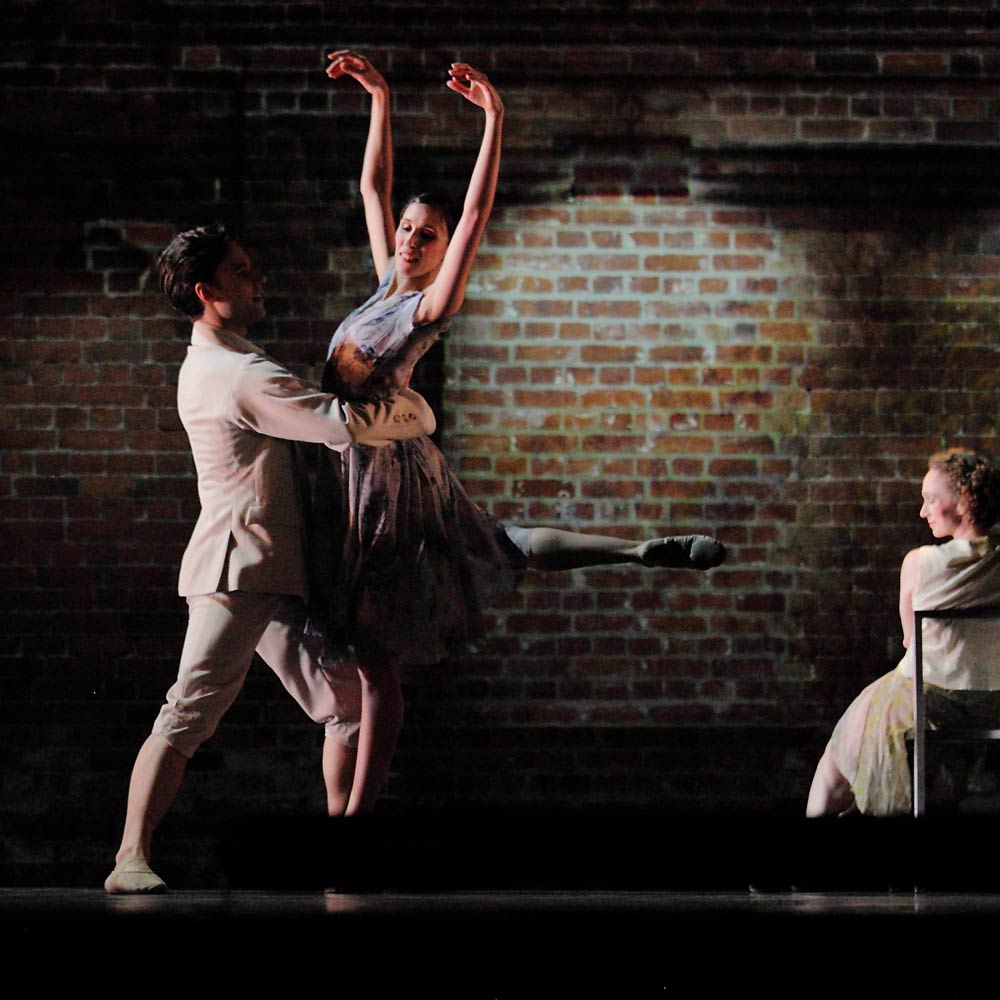
© Rob Marrison. (Click image for larger version)
The idea translates very easily into dance, and Brandstrup – as so often – has found the ideal interpreters. Edward Watson, as the older man, has comparatively little actual dancing but he can tell us everything about his character just by the way he sits, or turns his head: Marcelino Sambé is just perfectly cast as the boy. Still in his first year in the company, he can apparently do anything and dances with exactly the right openness, spontaneity and eager pleasure in what he’s doing. (I wonder what the RB plans to do with a talent like this?)
Layered on top of this is the presence of the boy’s mother (Mara Galeazzi, also very well cast), who – the way I read it – also personifies the memory of the onlooker’s own mother. There’s a quite electrifying moment when she first, accidentally, brushes her hand against Watson’s hair and you can see the shock of the recollection of his mother’s touch run right through him. Four friends provide a context for the playful boy – they’re clearly older than him but otherwise deliberately (I assume) left uncharacterised; I felt that, like the anonymous crowd in Brandstrup’s Rushes, they’re there to represent ordinary life, but particularly in one of the earlier sections they had too much to do for that role and looked for a time dangerously like padding. Itziar Mendizabal and Alexander Campbell were the more prominent of the two couples, with Deirdre Chapman and Johannes Stepanek kept more in the background.
Brandstrup always chooses his collaborators and his casts with an unerring eye and the result is usually something closer to the idea of ‘Gesamtkunstwerk’ than anyone else I know currently achieves. This time, though, I felt there was a slight but important mismatch between choreography and music, detracting from that sense of complete unity. Not at the level of steps, but possibly of scale: when Sambé was dancing there was no problem, but otherwise perhaps this big, exciting score is just too powerful for a small cast and for Brandstrup’s typically unassertive choreography?
The performance was sold out and very warmly applauded and I hope the Festival authorities will take notice, and schedule a similar programme in future years.












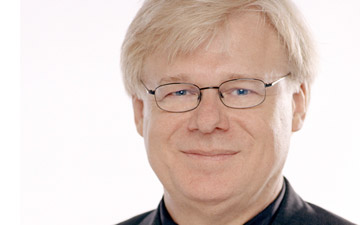


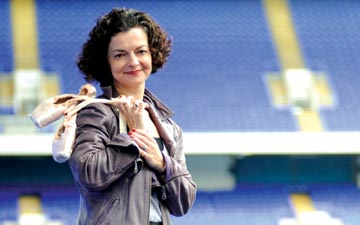
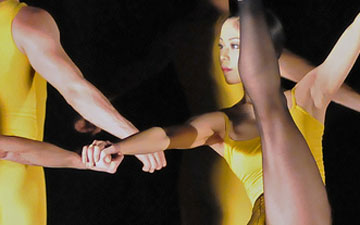
Jane: I’m with you on all of this, save that you seem to have got a bit more from the Cameron McMillan piece than I did. I was there on the second night, about 3/4 full, my second Dance performance at Snape – Cathy Marston’s pre-Linbury Triple Bill in 2009 being the first – and I’ve found it a super venue for contemporary work needing minimal staging though, as you say, the projections used in the Brandstrup ballet suggest all sorts of future possibilities there. I agree too on the acoustic and thought the Britten Sinfonia played out of their skins, especially in the Frank Bridge Variations under Barry Wordsworth – it was a real concert plus dance! Young Mr Sambé is clearly a find and I hope he doesn’t moulder away in the corps at the ROH. I was also taken by RB Flanders, a company I hadn’t seen before and as I’ll have a vicarious ‘interest’ there from next season, I’m hoping that the Carreiro/DanceEast connection might get them over here more often in future. (Oh, and I got a Spitfire circling overhead rather than birdsong during the first Interval – great stuff!)
Ian, the Spitfire belongs to Peter Grimes on the beach, I believe! It makes an appearance before the music starts, to establish the WW2 atmosphere of Tim Albery’s production.
Jane: What a great idea – and that would explain why he was going nowhere in particular. I think we (ie the Cambridge Phil) are doing Peter Grimes as our staged Opera next season, but I don’t think we could quite manage an aircraft in West Rd Concert Hall!